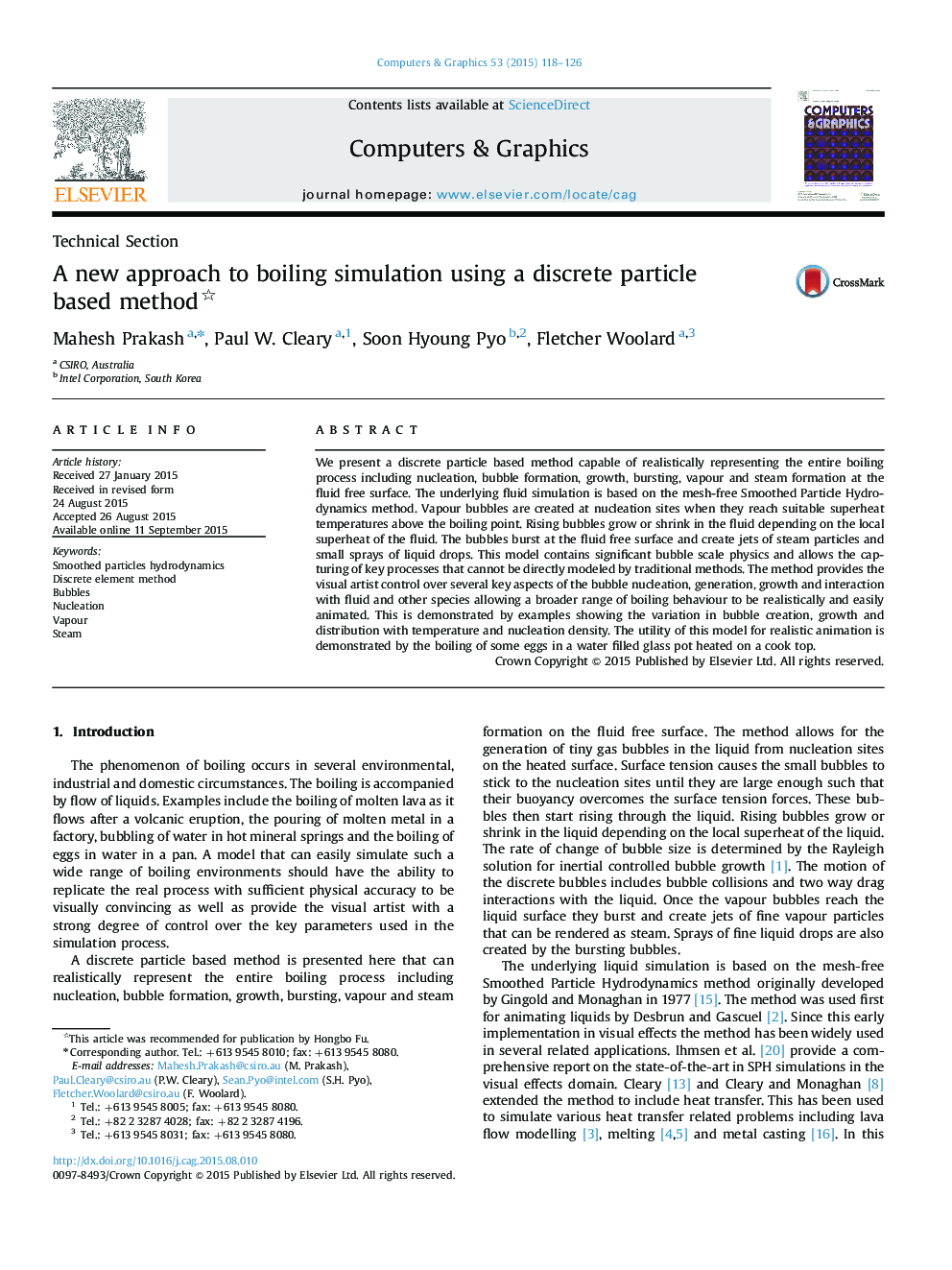| Article ID | Journal | Published Year | Pages | File Type |
|---|---|---|---|---|
| 441787 | Computers & Graphics | 2015 | 9 Pages |
•We simulate the boiling process using a physics based model.•Bubble: nucleation, thermally driven expansion, adhesion and collision included.•Smoothed Particle Hydrodynamics and Discrete Element Method used in conjunction.
We present a discrete particle based method capable of realistically representing the entire boiling process including nucleation, bubble formation, growth, bursting, vapour and steam formation at the fluid free surface. The underlying fluid simulation is based on the mesh-free Smoothed Particle Hydrodynamics method. Vapour bubbles are created at nucleation sites when they reach suitable superheat temperatures above the boiling point. Rising bubbles grow or shrink in the fluid depending on the local superheat of the fluid. The bubbles burst at the fluid free surface and create jets of steam particles and small sprays of liquid drops. This model contains significant bubble scale physics and allows the capturing of key processes that cannot be directly modeled by traditional methods. The method provides the visual artist control over several key aspects of the bubble nucleation, generation, growth and interaction with fluid and other species allowing a broader range of boiling behaviour to be realistically and easily animated. This is demonstrated by examples showing the variation in bubble creation, growth and distribution with temperature and nucleation density. The utility of this model for realistic animation is demonstrated by the boiling of some eggs in a water filled glass pot heated on a cook top.
Graphical abstractFigure optionsDownload full-size imageDownload high-quality image (283 K)Download as PowerPoint slide
